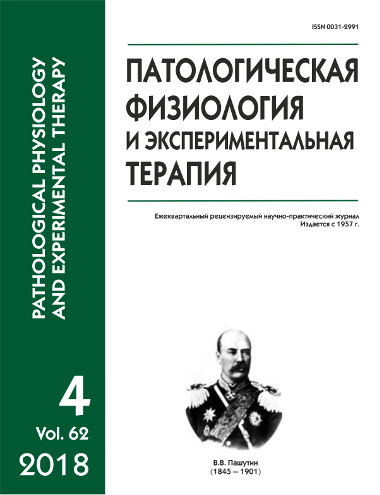Comparative quantitative analysis of the brain opioid gene expression in rats with high and low voluntary alcohol consumption
DOI:
https://doi.org/10.25557/0031-2991.2018.04.53-57Keywords:
alcohol preference, dependence, addiction, dynorphin, kappa opioid receptor, nociceptin, orphanin FQ receptor, dopamine, gene expression, mRNA level, PCRAbstract
Background. High hedonic value of alcohol is one of important risk factors for alcohol abuse and dependence. Activation of dynorphin and nociceptin opioidergic neurotransmission is suggested to be a homeostatic mechanism of negative feedback loop to arrest excessive mesolimbic dopamine release and thus, to decrease the rewarding effects of drugs of abuse and alcohol. Decreased tone of these evolutionarily closely related «anti-reward» opioidergic systems may result in increased hedomimetic properties of alcohol and thus, represent a principal pathogenetic mechanism of substance abuse. The aim of this study was to analyze opioid gene (KOP, NOP, ppDyn and ppNoc) expression in mesolimbic areas (mesencephalon, striatum and amygdala) in two groups of animals with different levels of alcohol preference. Methods. Using a 25-day-long (postnatal days [PND] 60 to 85) two-bottle free choice regimen (10% ethanol/water) in male Wistar rats we identified two groups of animals: low-drinking (A-) and low-drinking under the initial ethanol exposure but increasing the alcohol intake over the course of experiment (A+). mRNA levels were evaluated on PND 85 using a quantitative real-time reverse-transcription polymerase chain reaction procedure. Results. The А+ rats were found to have statistically significantly lower levels of ppDyn and ppNoc mRNA in the striatum and ppDyn, KOP and NOP mRNA in the amygdala than Аrats. Conclusions. We suggested that low levels of these «anti-hedonic» opioid gene expression in the striatum and amygdala may result in increased rewarding properties of alcohol in А+ rats and thus, may represent one of the principal mechanisms underlying high alcohol preference.Published
2018-11-21
Issue
Section
Original research
How to Cite
[1]
2018. Comparative quantitative analysis of the brain opioid gene expression in rats with high and low voluntary alcohol consumption. Patologicheskaya Fiziologiya i Eksperimental’naya Terapiya (Pathological physiology and experimental therapy). 62, 4 (Nov. 2018), 53–57. DOI:https://doi.org/10.25557/0031-2991.2018.04.53-57.






